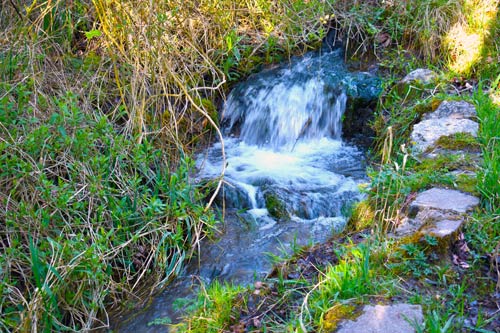Drinking water quality is high but increased vigilance is needed by Irish Water and Local Authorities to protect public health, says EPA.
- The quality of drinking water from public supplies remains high, with over 99.7% of samples compliant with bacterial and chemical limits.
- Two significant incidents during 2021 at the Gorey and Ballymore Eustace water treatment plants put the health of approximately 885,000 people at risk, highlighting significant failings in oversight and management by Irish Water.
- The number of supplies breaching THM standards increased in 2021, reversing all progress seen in recent years.
- Progress to remove lead from drinking water networks is too slow, with the need for stronger leadership at national level.
- The number of people served by “at-risk” supplies on the EPA’s Remedial Action List (RAL) has reduced, arising from upgrade works at two large water supplies: Leixlip and Vartry water treatment plants.

List of water supplies currently on a Boil Water Notice or Water Restriction in Co. Tipperary as of 28/09/2022 are: –
Tipperary – Glenary – Population affected 10,564.
Tipperary- Horse & Jockey PWS – Population affected 648.
Tipperary- Clonmel – Poulavanogue – Population affected 96.
The EPA Drinking Water Quality in Public Supplies Report 2021, released today, shows that the quality of drinking water in public supplies remains high, with over 99.7% compliance with bacterial and chemical limits. The continued high levels of water quality being achieved are positive for consumers and indicate that water is safe to drink.
However, there were two significant incidents during 2021 at the Gorey and Ballymore Eustace water treatment plants that put the health of approximately 885,000 people at risk, with community illness and hospitalisations occurring in the Gorey incident. These highlighted significant failings in oversight and management by Irish Water and local authorities.
The Environmental Protection Agency (EPA) instructed Irish Water to implement a number of actions at all supplies, to prevent the reoccurrence of similar issues. As a result of these actions, more drinking water quality issues were detected and reported, with the number of Boil Water Notices increasing significantly in the last quarter of 2021. The total number of people affected by Boil Water Notices in 2021 was approx. 211,000.
Launching the report, Dr Tom Ryan, EPA Director said:
“The serious incidents at Gorey and Ballymore Eustace water treatment plants last year, which resulted in unsafe water being released for consumption, have highlighted Irish Water’s fundamental obligation to ensure our public water supplies are properly operated, and managed, to protect public health. Increased vigilance is needed by Irish Water and Local Authorities in their oversight and management of plant operations to ensure incidents are dealt with appropriately and in a timely manner.”
Dr Ryan added: “Boil water notices are affecting an increasing number of consumers and while we recognise the challenges these present to individuals and communities, they are necessary to protect public health. High incidences of boil water notices will remain with us until Irish Water improves the resilience of drinking water plants.”
While water is safe today, the EPA’s Remedial Action List of “at-risk” supplies identifies where long-term improvements are needed in our drinking water infrastructure to protect public health.
Following EPA targeted enforcement, supplies upgraded in 2021 include Vartry (serves approx. 127,000) and Leixlip (serves approx. 590,000) water treatment plants. At the end of 2021, there were 52 “at-risk” supplies serving approx. 375,000 people down from 1,000,000 consumers in 2020.
However, the latest publication of the RAL (Sept 2022) has seen some of this progress eroded, with the population served by “at-risk” supplies increasing to approx. 575,000.
Furthermore, the length of time it takes to implement improvements at supplies is not acceptable to the EPA, as it means these supplies remain vulnerable for longer.
The EPA requires that Irish Water targets investment and resources to both reduce the number of supplies on the RAL, and the time it takes to implement these improvements.
Mr Noel Byrne, EPA Programme Manager, said: “It is welcome to see how targeted enforcement has led to significant improvements at large supplies such as Leixlip and Vartry, supporting the security of these critical water supplies into the future. However, in order for supplies to be secure into the future, Irish Water must resolve the “at-risk” supplies on the RAL and ensure that future actions are targeted where they are most needed to protect public health. In particular, the deterioration in compliance with THM standards needs to be addressed as a matter of priority.”
Lead in drinking water causes a cumulative risk to human health. The EPA is highlighting the slow rate of lead replacement by Irish Water, as it will take almost a quarter of a century to address the risks posed to public health from lead in drinking water at the replacement rate observed in 2021. In addition, leadership is required at a national level by relevant Departments to address this issue. A report from these Departments on assessments of lead pipework in public buildings and plans to remove lead from these buildings is overdue.
The EPA Drinking Water Quality in Public Supplies Report 2021 and the complete list of public water supplies currently on the Remedial Action List – including details of the proposed remedial measures and associated timeframes – are available HERE on the EPA website.

Leave a Reply